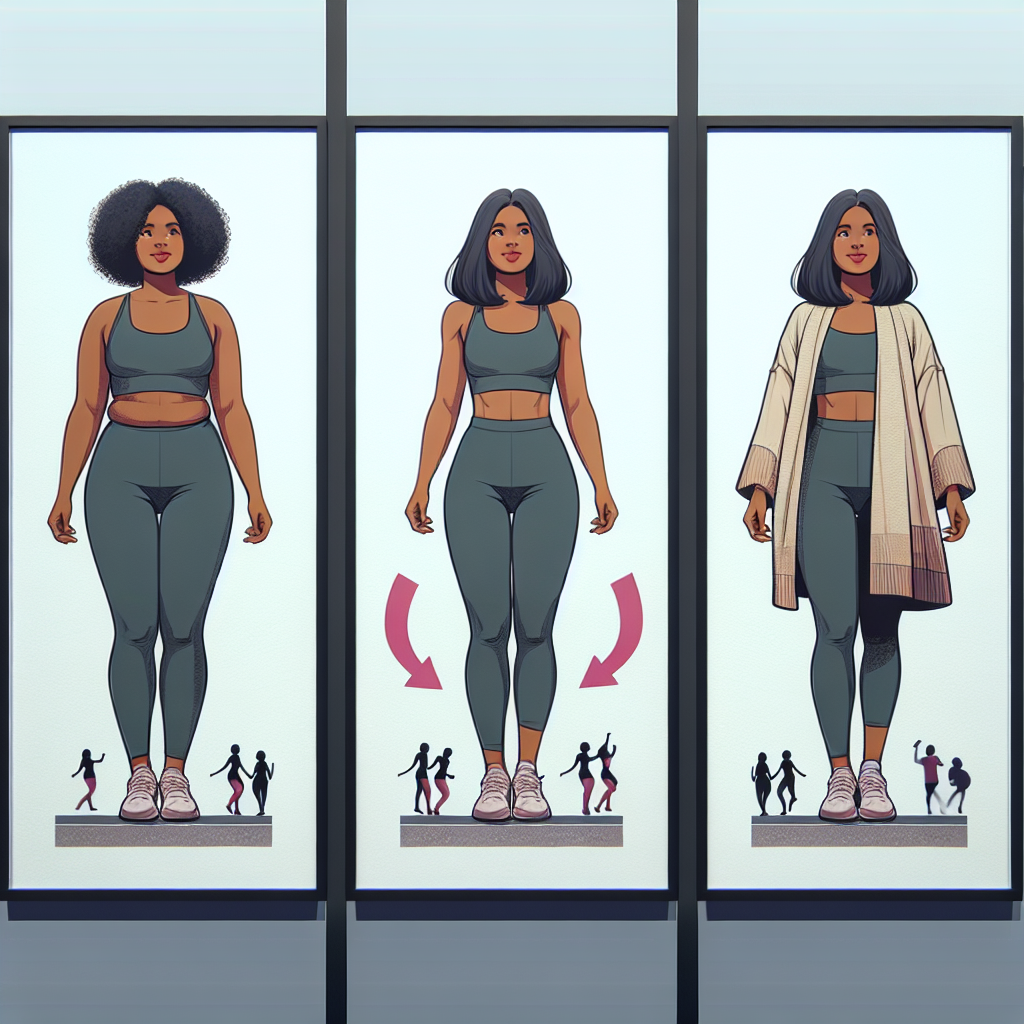Their Stories After Fit to Fat to Fit: Where Are They Now?
Tracing the remarkable journeys of individuals who underwent significant transformations in the television series “Fit to Fat to Fit”, this article provides an intriguing insight into their current status. These individuals, who once sculpted their bodies with discipline and determination, intentionally gained weight, only to undertake the strenuous journey back to fitness. Despite the disquieting effect on their physical and emotional well-being, they undertook this oscillating journey to empathize with the struggles their less-fit clients face. This article aims to shed light on their stories post the spicy spectacle, uncovering the resilient spirit inherent in each participant’s pursuit of a healthier lifestyle.

Understanding the Fit to Fat to Fit Concept
The Fit to Fat to Fit concept emerged from a reality TV show where professional fitness trainers would voluntarily gain significant amounts of weight, only to lose it again alongside their overweight clients. This experiment was designed to give trainers a deeper understanding of the physical and emotional struggles their clients experienced on their weight loss journeys.
The reasoning behind the drastic weight gain and loss experiment
The purpose of this dramatic experiment was to bridge the empathy gap often present between fitness trainers and their clients. By walking in their client’s shoes, the trainers were able to truly appreciate the difficulties faced by people trying to lose weight. This understanding was expected to facilitate a more compassionate and effective approach to fitness training and weight loss.
Exploring the health implications of extreme weight fluctuations
While the intentions of the experiment were good, the health implications of such drastic weight fluctuations are a cause for concern. Rapid weight gain can increase the risk of developing conditions such as diabetes, high blood pressure, and heart disease, while rapid weight loss can lead to muscle loss, nutrient deficiencies, and metabolic slowdown. It is crucial to approach weight loss in a sustainable, healthy manner to avoid such complications.
Why Fit to Fat to Fit was Canceled
Despite its pioneering concept, the Fit to Fat to Fit show was not without its controversies and criticisms, which eventually led to its cancellation.
Understanding the controversy and criticism
The show was criticized for encouraging weight fluctuations and promoting the idea that such dramatic changes were healthy and attainable. Again, the detrimental impact of such drastic weight gain and loss on participants’ overall health was a major concern.
Exploring the impact of the show on participants’ health
Further, while inspiring in theory, the reality of the show was that many participants faced significant health problems resulting from the extreme body changes—both physical and psychological. This raised further questions about the ethics of exploiting these health risks for the sake of entertainment.
Portrayal of Body Fat on the show
Body fat, an essential component of the human body, was on full display in this TV show.
What do varying amounts of body fat look like
Ideally, body fat should range from 21% to 36% for women and 14% to 24% for men. For the viewers, seeing this range, and more, visually portrayed offered an eye-opening experience. But it’s important to note that body fat isn’t just about appearance. It plays a crucial role in protecting the organs, insulating the body, and providing a reliable energy source.
Demystifying assumptions about body fat
The show debunked several myths related to body fat. For example, having more body fat doesn’t necessarily mean you’re unhealthy, and having less doesn’t automatically guarantee health. It’s more about the balance and distribution of fat.

Notable Participants from the show
Many participants left an indelible mark on the viewers with their inspiring transformations, but all had their unique motivations and challenges.
Most inspiring transformations
While it’s hard to single out certain participants, all of them offered inspiring insights into what’s possible when perseverance meets empathy in a journey towards better health.
Understanding their motivations and how the journey affected them
Most participants were driven by their desire to lose weight, improve their health, and lead better lives. The journey transformed not only their bodies, but their attitudes towards exercise, diet, and overall well-being.
Sophie’s Journey on Fit to Fat to Fit
Highlighted amongst many participants was Sophie, who demonstrated an inspiring journey on Fit to Fat to Fit show.
Sophie’s total body fat range
Sophie started out at a healthy body fat percentage, around 30%. She committed to the journey and faced the challenge of weight fluctuation bravely, understanding the paramount importance of body fat in her overall health.
Sophie’s journey post the show
Sophie continued her health journey even after the show wrapped up. Her story serves as a reminder that weight fluctuation is not a lifestyle, it’s a condition that can and must be managed with proper guidance, nutrition, and exercise.
Misconceptions Cleared in Fit to Fat to Fit
The show cleared many misconceptions about body fat and its role in the human body.
Understanding the different types of body fat
There are two types of body fat: essential body fat necessary for bodily functions, such as protection of internal organs; and storage fat which is fat accumulation resulting from excess calorie consumption.
Myths related to storage body fat
The show also debunked the myth that all storage fat is bad. While excessive storage fat can lead to health risks, a certain amount is necessary for energy reserve.
The Truth about Fat
The show was an opportunity to demystify fat and remove its negative connotations.
Addressing what we don’t talk about when we talk about fat
When we talk about fat, words like ‘unhealthy’, ‘unsightly’, and ‘shed’ often come up. This narrative is dangerous because it makes us overlook the fact that fat is an essential part of our bodies.
How fat is misunderstood and misrepresented
Fat is often misunderstood as a mere aesthetic concern when it’s a crucial part of our overall health. The representation of fat in popular culture often ties it to negative stereotypes, furthering the stigma and misconception.
Fitness and Relationship Dynamics
The show also shed light on how changes in fitness and body shape can affect personal relationships.
Exploring themes like ‘I miss my boyfriend when he was fat’
This statement captures the challenges relationships can face when a partner’s physical appearance changes dramatically.
How relationships can change with weight change
Weight change can invariably impact relationships—sometimes positively, by instilling newfound confidence or attracting admiration, and at other times, negatively by causing stress or stirring insecurity.
Healthiest Fat Consumption
The show also served as an educational platform to provide information about healthy fat consumption.
Addressing queries such as ‘which is the healthiest fat that Ismael can use to saute chicken?’
For instance, participants were educated on good and bad fats. healthy fats like avocado oil, olive oil, and flaxseed oil were recommended for grilling, baking, and sautéing, whereas unhealthy fats like trans fats and certain saturated fats were advised to be limited or avoided completely.
Educating on good and bad fats
The understanding of good and bad fats, including their roles and how they affect health, was given priority in the Fit to Fat to Fit approach to holistic fitness journey.
Where are the participants now?
A question often asked by viewers and critics alike: how have the participants carried forward their journey post the show?
Checking on their current health status
Most of the participants have reported positive changes not just in their physical health but in their emotional and mental well-being as well.
Are the participants maintaining their Fit to Fat to Fit journey in their lifestyle?
While some participants have been able to maintain their lifestyle changes, others have faced struggles. This serves as a reminder that every health journey is unique, and all ups and downs are an integral part of that journey. There is no ‘one-size-fits-all’ approach to health and wellness. It underscores the need for a sustained, practical, and appropriate plan based on individual health needs and capabilities.

